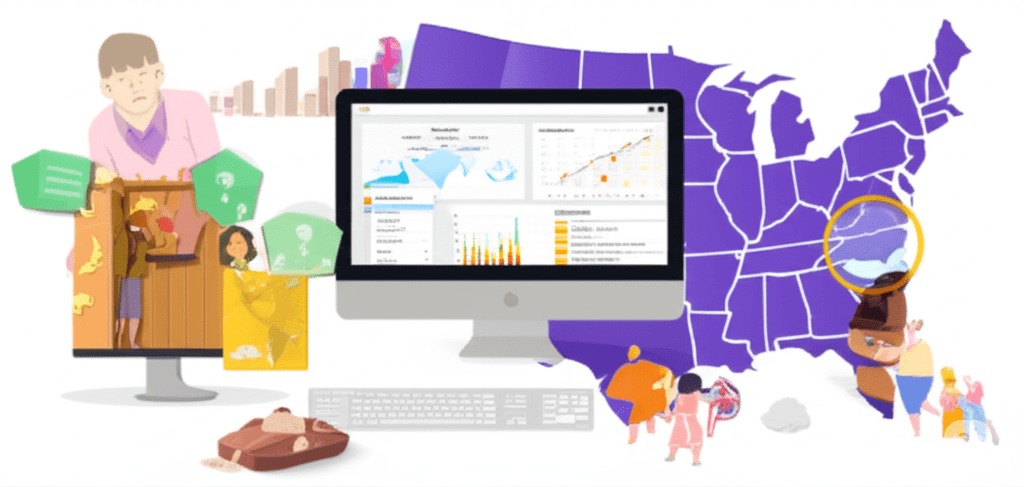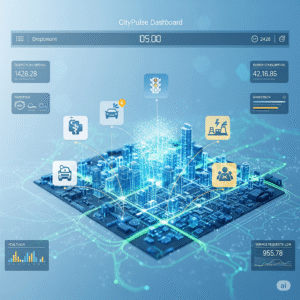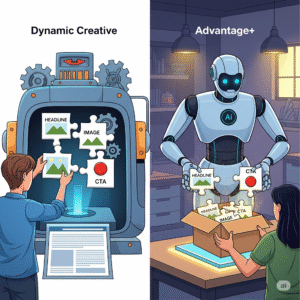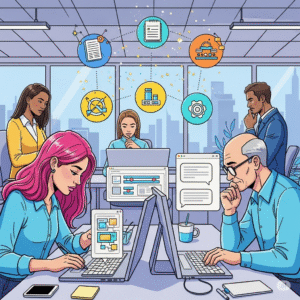We’ve all been there: stuck in a long queue, on hold for what feels like an eternity, or navigating a labyrinth of confusing government websites just to get a simple question answered. For decades, interacting with public services has often been a test of patience. But what if that could change? What if you could get immediate, personalized support 24/7, renew a permit with a simple text message, or have services proactively offered to you before you even realize you need them? This isn’t a distant dream. It’s the rapidly unfolding reality of AI citizen services.
Artificial intelligence is quietly revolutionizing the public sector, moving beyond a “one-size-fits-all” model to deliver services that are efficient, accessible, and deeply citizen-centric. The goal is to slash through the red tape and eliminate the bureaucratic hurdles that create frustration and friction. By leveraging Government service AI, agencies are not just digitizing old processes; they are fundamentally reimagining how they connect with and serve the public. This article will explore the transformative world of AI citizen services, detailing how they work, showcasing real-world examples of success, and providing a roadmap for how governments can build a more responsive and efficient future for everyone.
AI Cops: Can Tech Predict Crime Before It Happens?
The New Public Square: What Are AI Citizen Services?
At its heart, AI citizen services refers to the use of artificial intelligence technologies to streamline, personalize, and improve the public’s access to government resources and support. It’s about meeting people where they are—on their phones, on their computers, and in their native languages—to provide a seamless and intuitive experience. This marks a significant shift from traditional, often rigid, government processes to a more agile and user-friendly approach.
This transformation is powered by Government service AI, which encompasses a range of technologies. These include chatbots that can answer common questions instantly, machine learning algorithms that can predict citizen needs, and automation tools that can process applications and requests in a fraction of the time it would take a human. The ultimate vision for AI citizen services is to create a public sector that feels less like an impersonal institution and more like a helpful, responsive partner in our daily lives.
Can AI Stop the Next Disaster? The Tech That’s Changing Everything
Core Components Powering AI Citizen Services
Several key technologies are the building blocks of modern AI citizen services. Understanding them helps to demystify how this revolution is happening:
- Chatbots and Virtual Assistants: These AI-powered tools provide instant, 24/7 support. They can answer frequently asked questions, guide users through complex forms, and escalate more complex issues to a human agent when necessary.
- Natural Language Processing (NLP): This is the technology that allows AI to understand and respond to human language. NLP enables chatbots to have natural conversations and helps agencies analyze citizen feedback from emails, social media, and surveys.
- Robotic Process Automation (RPA): RPA uses software “bots” to automate repetitive, rules-based tasks like data entry, form processing, and document verification. This frees up human employees to focus on more complex, value-added work.
- Predictive Analytics: By analyzing historical data, AI can predict future needs. For example, it can anticipate which citizens might be eligible for a new benefit program or which neighborhoods might require additional public services.
The Shift to Proactive and Personalized AI Citizen Services
Historically, government services have been reactive. You have a problem, you reach out, and you get a solution. AI citizen services flips this model on its head by enabling proactive engagement. Imagine a system that automatically notifies you when your driver’s license is about to expire and provides a direct link to renew it online. Or a Government service AI that identifies small business owners who might qualify for a new grant and sends them a simplified application.
This level of personalization builds trust and dramatically improves the citizen experience. It shows that the government understands the individual needs of its people and is actively working to make their lives easier. This proactive approach is a cornerstone of the most advanced AI citizen services strategies.
Real-World Wins: How AI Citizen Services Are Making a Difference
The impact of Government service AI is not just theoretical; it’s delivering tangible benefits to citizens and governments around the world. From reducing wait times to improving access for people with disabilities, AI is making public services more efficient and equitable.
These applications demonstrate that AI citizen services are not about replacing human connection but enhancing it. By automating the mundane and providing instant access to information, AI frees up public servants to handle the most complex and sensitive cases where a human touch is essential.
Use Case 1: 24/7 Support with AI-Powered Chatbots
Many government agencies are deploying chatbots on their websites to handle the high volume of routine inquiries they receive. These bots can instantly answer questions about business hours, document requirements, and application statuses. This has led to a dramatic reduction in call volumes and email backlogs, allowing human agents to focus on more complex citizen issues. For citizens, it means no more waiting on hold—just quick, accurate answers, anytime.
Use Case 2: Streamlining Applications with Robotic Process Automation
Applying for benefits, permits, or licenses often involves a mountain of paperwork and a lengthy review process. Government service AI in the form of RPA is changing that. Software bots can now automatically extract information from submitted forms, verify it against existing records, and flag any inconsistencies for human review. This has slashed processing times from weeks to days, or even hours, getting critical services and funds into the hands of citizens much faster.
Leaders in Innovation: Case Studies in AI Citizen Services
Some governments and organizations have embraced the potential of AI citizen services and are leading the way in creating a more modern and responsive public sector. Their stories offer valuable lessons for any agency looking to embark on this journey.
Case Study 1: The U.S. Citizenship and Immigration Services (USCIS) Chatbot “Emma” USCIS launched a virtual assistant named “Emma” to help users navigate its complex website and answer questions about immigration services. Emma can understand and respond to questions in both English and Spanish, providing information on a wide range of topics, from green cards to naturalization. Since her launch, Emma has answered millions of questions, significantly improving user experience and reducing the burden on the USCIS contact center. This is a prime example of how AI citizen services can improve accessibility and provide immediate value.
Case Study 2: Estonia’s Proactive e-Government Estonia is a global leader in digital governance, with a strong focus on proactive Government service AI. The country has built a system where services are automatically offered to citizens based on major life events. For example, when a child is born, the parents are automatically presented with all related benefits and registrations without having to apply for them separately. This “once-only” principle, where citizens only have to provide their information to the government once, is a powerful demonstration of how AI citizen services can eliminate bureaucracy and create a truly seamless citizen experience.
The Human Element: Ethics and Trust in AI Citizen Services
While the efficiency gains from AI citizen services are undeniable, the transition must be managed with a strong focus on ethics, transparency, and inclusivity. Building and maintaining public trust is paramount.
Ensuring Fairness and Accessibility for All One of the biggest risks of Government service AI is the potential for bias. If an AI system is trained on biased data, it can produce biased outcomes, potentially disadvantaging certain groups. For example, an automated system for approving loan applications could unfairly discriminate against applicants from low-income neighborhoods if not designed and tested carefully. Furthermore, not all citizens have equal access to technology. A robust AI citizen services strategy must include non-digital options and ensure that AI-powered tools are accessible to people with disabilities. For more on the importance of ethical AI, resources from organizations like OpenAI provide valuable frameworks.
Data Privacy and Security in the Public Sector To provide personalized services, governments need to collect and analyze citizen data. This raises important questions about privacy and security. Citizens need to know what data is being collected, how it is being used, and that it is being protected from misuse and cyberattacks. A successful AI citizen services program must be built on a foundation of clear data governance policies and transparent communication with the public. As detailed by platforms like HubSpot in the business world, customer trust is everything—and the same is true for citizen trust.
Your Guide to Citizen-Centric Data Tools
While government agencies use enterprise-level systems, the principles behind AI citizen services can be explored using accessible data analysis tools. Understanding these can help demystify how agencies turn raw data into better services.
- Tableau / Power BI: These are powerful data visualization platforms. An analyst could use them to create a dashboard showing citizen satisfaction scores, chatbot interaction volumes, and application processing times. This helps identify areas for improvement.
- MonkeyLearn: A fantastic tool for text analysis. An agency could use it to analyze thousands of comments from a public consultation forum to quickly identify the most common themes and concerns, providing direct, actionable feedback for improving AI citizen services.
- ChatGPT: More than just a chatbot, tools like ChatGPT can be powerful analytical partners. An agency could use it to draft clearer, more human-friendly language for its website, create sample chatbot conversation flows, or summarize lengthy policy documents into easy-to-understand public communications.
A Simple Workflow for Improving a Citizen Service
- Identify the Pain Point: Start with a specific problem. For example, “Our call center is overwhelmed with questions about recycling pickup schedules.”
- Gather the Data: Collect data on call volumes, the most frequently asked questions, and website traffic to the recycling information page.
- Analyze and Ideate: Use a tool like MonkeyLearn to categorize the questions. You’ll likely find that 80% of the questions are about a few key topics.
- Develop an AI Solution: Based on the data, decide to build a simple chatbot for the website that can answer these top questions. Use a tool like ChatGPT to help write the chatbot’s script in a clear and friendly tone.
- Launch and Measure: Deploy the chatbot. Track how many inquiries it resolves and measure the corresponding drop in call center volume. This iterative process of identifying a problem and deploying a targeted
Government service AIsolution is the key to progress.
The Future of Government is Here
The era of clunky, impersonal government services is coming to an end. AI citizen services are not a futuristic fantasy; they are a practical and powerful set of tools that are already making a real difference in people’s lives. By embracing automation, personalization, and a citizen-first mindset, governments can build a future that is more efficient, more accessible, and more responsive to the needs of the people they serve. The journey requires careful planning and a deep commitment to ethical principles, but the destination—a truly modern and helpful public sector—is well worth the effort.



